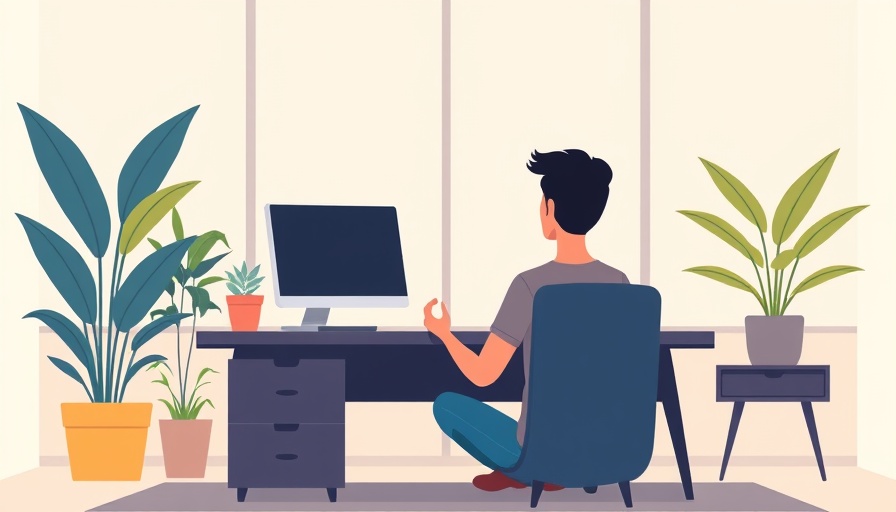
Finding Mindfulness in Everyday Workspaces
In today's fast-paced work environment, professionals often grapple with stress and distractions that can significantly impact their productivity and mental well-being. The concept of meditating at your desk emerges as a powerful tool to create a pocket of calm amidst the chaos. This guided meditation practice allows individuals to recenter their minds, refresh their attention, and cultivate a greater sense of presence—an essential skill in both corporate and remote settings.
Accessible Mindfulness: How Meditation Can Fit Into Your Workday
When it comes to incorporating mindfulness practices, a common misconception is that effective meditation requires lengthy sessions or tranquil surroundings. However, the “desk chair” meditation counteracts this myth by demonstrating that meaningful moments of reflection can happen anywhere, whether in a conference room, a park, or even your car during lunch. The flexibility of this practice makes it accessible to anyone, empowering workers to prioritize their mental health even amidst busy schedules.
Grounding Techniques for Everyday Peace
The guided meditation involves a simple but effective strategy: focusing on the sensations of your breath and gradually scanning your body. By directing attention to different parts of the body—from the soles of your feet to the tips of your fingers—you cultivate a connection with physical sensations, grounding yourself in the here and now. This practice is especially valuable for individuals who may find it challenging to escape their busy minds when stress levels rise.
Creating a Supportive Workplace Culture
The value of integrating short meditation breaks into work routines transcends individual benefits; it contributes to fostering a supportive workplace culture. Employers who encourage mindfulness can see increased employee satisfaction, reduced burnout rates, and enhanced team collaboration. Office spaces that incorporate meditation-friendly environments—such as quiet rooms and outdoor seating—can further reinforce this culture, showing employees their mental well-being is a priority.
The Science Behind Desk Meditation
Recent studies suggest that practices like desk meditation can lead to lower levels of stress and anxiety. According to research published in various health journals, engaging in mindfulness exercises regularly contributes to neuroplasticity—the brain's ability to adapt and change. Professionals who practice mindfulness at work can enhance their emotional regulation, leading to more effective decision-making and improved interpersonal relationships.
How to Start: Simple Steps for Your Desk Meditation Journey
Getting started with desk meditation is easy and only requires a few moments of your time. Begin by finding a comfortable sitting position in your chair. Close your eyes and take deep breaths, allowing your mind to clear. Use the guided meditation approach to shift your focus through your body, and practically observe how you feel. Commitment to just a few minutes can transform your day, bringing clarity and calm amidst the storm of daily tasks.
Embracing the Benefits of Mindful Breaks
For many professionals and health-conscious families, the benefits of short meditation practices extend beyond the workplace. The ability to pause, breathe, and reflect allows individuals to approach life’s challenges with greater resilience. Considering the fast-paced nature of modern life, integrative practices such as desk meditation become essential tools that enable people to recharge and revitalize their focus.
As you embark on your mindfulness journey, the key is consistency. By setting aside time throughout your day for meditation—whether at your desk or in a quiet corner—you not only invest in your well-being but also enhance your capacity to thrive in both professional and personal settings.
Take a moment now to explore how adding mindfulness practices to your routine could foster a healthier, more balanced life.
 Add Row
Add Row  Add
Add 




Write A Comment